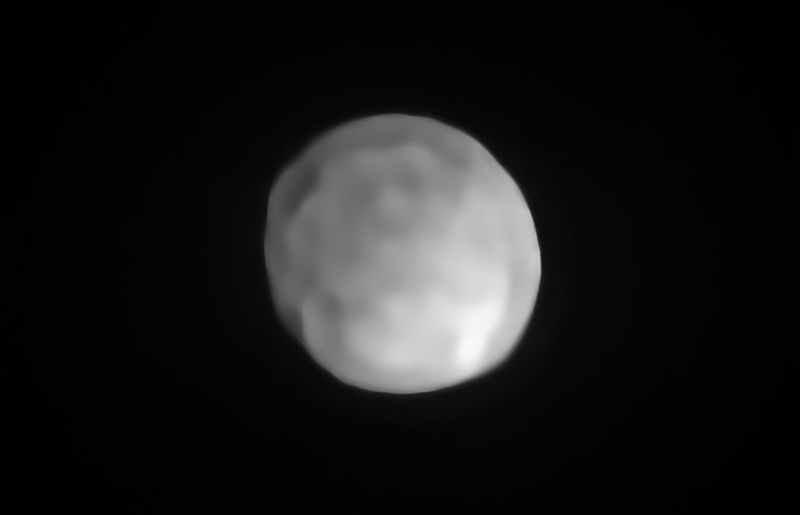
The our bodies of our Photo voltaic System's asteroid belt have violent pasts. Some, just like the dwarf planet Ceres, have seen their interiors restructured underneath the drive of gravity whereas having their surfaces blasted by collisions. Smaller asteroids have skilled collisions that utterly shattered them, leaving their particles' weak gravity to drag the items collectively right into a rubble pile. Now, new pictures of the fourth-largest physique within the asteroid belt, Hygiea, counsel it has a historical past that is someplace between the 2. After struggling a shattering collision within the distant previous, the physique's stays had sufficient gravitational pull to form it right into a dwarf planet.
Historical past vs. observations
We all know Hygiea has skilled a collision prior to now, as a result of we will see its stays. A whole household of small asteroids are present in orbits that counsel they originated from the asteroid about two billion years in the past.
In different instances the place we have seen asteroid households like this, the physique on which they originated is both pockmarked with craters and/or has suffered no less than one extraordinarily massive collision. So, planetary scientists in all probability had comparable expectations in thoughts once they turned the Very Massive Telescope on the European Southern Observatory towards Hygiea in 2017.
As an alternative, the physique they imaged was remarkably easy and practically spherical—its common radius is 217km, and sure solely varies from 225km to 212km. It was additionally rotating at roughly twice the speed that we thought it had been.
None of that's fairly what was anticipated: "None of our pictures and their related contours revealed the massive influence basin anticipated from the massive measurement of the Hygiea [asteroid] household."
To determine how the asteroid household might have fashioned, the researchers constructed a mannequin that allowed them to check out completely different collisions, testing completely different impactor sizes and angles of influence. After utilizing these collision fashions to generate particles, the researchers let gravity take over and work out what the re-formed Hygiea and its remaining particles (which might go on to type the asteroid household) would appear like.
A simulation of Hygiea's destruction and re-formation.
The collisions that labored, reasonably than forming a big crater, as a substitute utterly shattered the asteroid. This could possibly be achieved both by a head-on collision with a 75km object or an off-center collision with a 150km object. The off-center collisions, nevertheless, tended to not go away any massive our bodies within the particles (aside from Hygiea itself); since some members of the ensuing asteroid household are bigger, the researchers conclude {that a} head-on collision is almost definitely.
Liquified
Along with liberating a particles area, the collision turned the stays of Hygiea right into a fluid, which underwent large-scale oscillations for about 4 hours after the occasion. This allowed the particles to evenly combine and equilibrate, producing the physique's present spherical form. This was in all probability enabled by the comparatively low density of the fabric; the researchers estimate that Hygiea is lower than twice as dense as water.
That is just like the density of Ceres, the biggest physique within the asteroid belt. The authors counsel that the 2 fashioned additional out than the "snow line" of water, the purpose the place materials was far sufficient from the Solar for water to stay frozen.
The authors additionally argue that the collision might have by the way turned Hygiea right into a dwarf planet. As they observe, something within the asteroid belt orbits the Solar and is not orbiting a bigger physique, fulfilling two of the 4 necessities for dwarf planet standing. These our bodies must also have cleared their orbit; that relies upon considerably on the orbits of the opposite materials in the identical asteroid household—presumably, in the event that they have been shut sufficient, they'd have already got been included again into Hygiea.
That leaves one final hurdle: does Hygiea have sufficient mass to type a spherical form underneath the drive of its personal gravity? It is not clear what Hygiea seemed like earlier than the collision, as another massive asteroids like Eros have fairly irregular shapes. However after its disruption, Hygiea's gravity was clearly adequate to form it right into a sphere. Consequently, the researchers counsel it ought to be designated a dwarf planet, the smallest one but.
Nature Astronomy, 2019. DOI: 10.1038/s41550-019-0915-8 (About DOIs).
